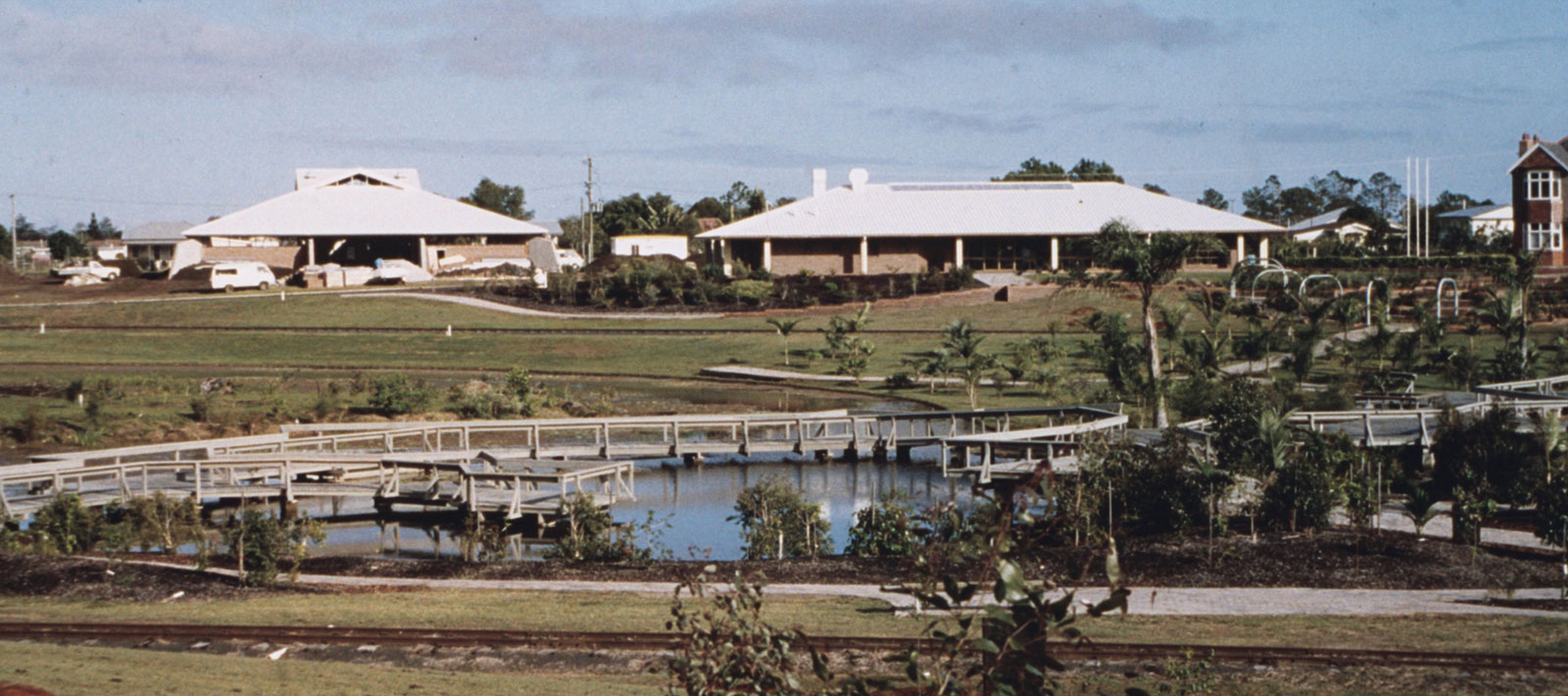Planning and Establishment
Prior to European settlement, the land on which the present Botanic Gardens is situated consisted of three basic plant communities - Microphyll vine forest (vine scrub), Sclerophyll woodland (open forest), merging with Melaleuca (paperbark) wetland surrounding aquatic vegetation on the lagoons.
Due to the diversity of vegetation and the lagoons with the associated abundant wildlife, the area was an important meeting and food gathering place for the Aboriginal people of the surrounding area.
Soils
The soils in the Gardens vary from loams overlaying deep impermeable clay to organically rich loams to alluviums on the flats abutting Hinkler Avenue.
Concept Plan
The original concept plan was drawn up by the City's Landscape Planner, Mr. Les Rogers in November, 1981, however due to ill health and his untimely death, the planning was later carried out by Landplan Studios. In 1984, the East Bundaberg Rotary Club and the Hinkler Historical Society commenced on a plan to move the home, in which aviator Bert Hinkler lived in England, out to Bundaberg and have it placed in the Gardens precincts.
Lagoons and plantings
The original lagoon was excavated and made into three parts with a wildlife island developed mid lagoon now known as the Agnes Watson Lagoons.
1986 saw the commencement of tree and shrub planting in the North West section, the Rose Gardens, now named the Hinkler Garden, developed below Hinkler House, building a Ring Road, commencement of pathways and boardwalks and construction of the Kiosk and Restaurant, and the building of the train track.
Planting of the Rainforest and Sclerophyll forest sections were commenced and continued during 1987 and the pathways and boardwalks completed in the northern section of the Gardens.
Japanese Garden
Further planting continued during 1988 and the Historical Museum was completed. 1990 saw the commencement of landscaping of Fairymead House adjacent to Thornhill Street on the southern side of the Gardens. During 2004, after many months of planning and design, a Japanese Garden was built on the north western side of Fairymead House as a tribute to Bundaberg’s sister city, Settsu, in Japan. Some exotic species were planted in the vicinity of Hinkler House and Kiosk.

